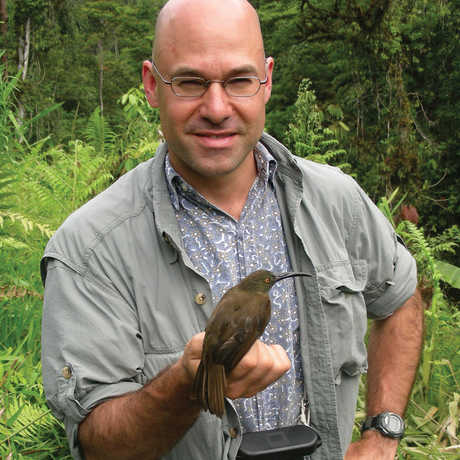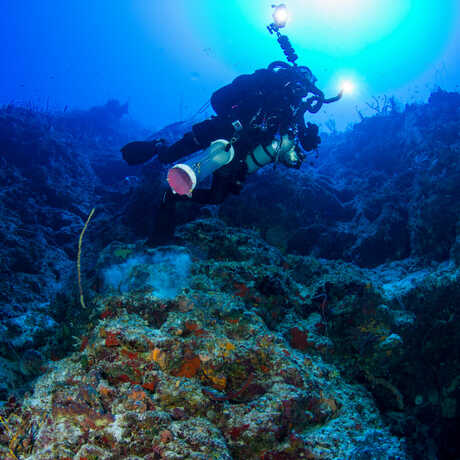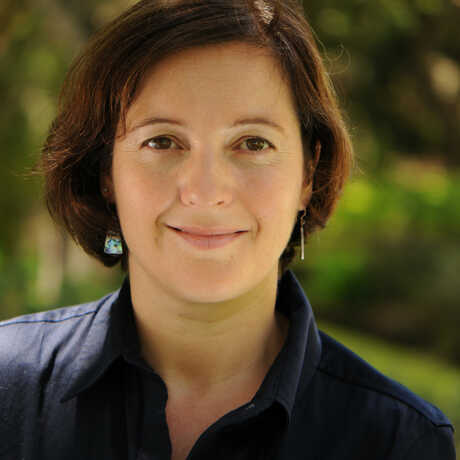
Join us all October Members’ Month and beyond for our new Member Pop-Ups. This series of walks and talks are free opportunities to learn something new, meet other members, and most of all have fun! Plus, you get special access to the leaders, experts, and scientists that make the California Academy of Sciences such a special place.
Space is limited, so sign up today!
You will need a valid membership to participate in the Member Pop-Ups. Lapsed or not yet a member? Renew or join today and receive free general admission ticket(s)*.
Living Roof Walk

Thursday, October 6 at 11 am
Step out on our famous living roof with Will Silver, Landscape Exhibits Supervisor. Learn about the benefits of our amazing living roof, plus get up close to some of its estimated 1.7 million native plants and find out how the roof provides a much-needed habitat for birds, bees, butterflies. Plus, you’ll walk away with tips on how to incorporate sustainable practices into your own gardens!
Recommended for age 6 and above. Approximately 30 minutes. Please note that we will be accessing stairs on the living roof. Meet in Lobby.
A Bird Walk in the Park

Thursday, October 13 at 11 am
Join Dr. Jack Dumbacher, Academy Curator of Ornithology and Mammalogy, for a birding adventure in Golden Gate Park. Stroll from the Academy lobby to Stow Lake and learn birding basics. Listen and look for the many species of birds that make the park home, including a variety of seagull species, cormorants, grebes, great blue herons, and more. Bring your binoculars, eyes and ears and be ready to have a great time!
Recommended for ages 10 and above. We have a limited number of binoculars for lending. Approximately 30–45 minutes. Please note terrain can be rocky and uneven in places. Meet in Lobby.
Reserve your spot today:
Sustainability and the Global Environment

Thursday, October 13 at 3 pm
Reserve your spot to join our Executive Director Dr. Jon Foley for a very special members-only discussion about the global sustainability challenges we face today. Dr. Foley will discuss global environmental issues such as climate change, food security, and water resources. You’ll also learn about solutions to these major issues and how you can make a positive impact in your own daily lives.
Approximately 45–60 minutes. The discussion will take place in the Academy's North Classroom. Meet in Lobby.
This event is now full. You can add your name to the waitlist via the link below.
Twilight Zone: An Exhibition of Mesophotic Life

Wednesday, October 19 at 2 pm
Join Charles Delbeek, Assistant Curator of Steinhart Aquarium, for a fascinating look at mesophotic coral reefs, popularly called the "Twilight Zone." Over the last 20 years, advances in rebreather diving technology has enabled an increasing number of researchers, marine life collectors, and explorers to access a relatively unexplored region of the aquatic realm that lies between 200–500 feet below surface.
Learn about the diving technology and collection and shipping techniques employed by Steinhart Aquarium biologists, divers, and scientists to create the California Academy of Science's newest exhibit Twilight Zone: Deep Reefs Revealed.
Approximately 45–60 minutes. The discussion will take place in the Academy's North Classroom on Level 2.
From Aedes to Zika: Understanding the Origins & Dynamics of Emerging Diseases

Thursday, October 27, 3–4 pm
Join us for a fascinating talk by Shannon Bennett, Chief of Science and Harry W. and Diana V. Hind Dean of Science and Research Collections. Dr. Bennett will discuss how recent decades have seen a mounting incidence of novel or re-emerging viruses inflicting human populations worldwide. This includes the Zika virus, and many others transmitted by mosquitoes of the genus Aedes. Learn how humans are modifying landscapes at an alarming rate on a global scale in ways that specifically promote the invasion of species of Aedes that transit Zika and other viruses. Explore the origins of viruses with emergence potential by sampling mosquitoes across urban and natural settings and find that biodiversity loss may increase the risk of disease in humans. To understand where Zika comes from and why it is a problem today like never before, we must consider the entire system in which humans live: from Aedes to Zika, and everything in between.
Approximately 60 minutes. The discussion will take place in the Academy's Forum Theatre, Level 2.
The Human Microbiome: Our Friends for Life

Thursday, November 10, 3–4 pm
The Academy welcomes Dr. Elisabeth M. Bik, Research Associate at the Department of Medicine at Stanford University’s School of Medicine, for a discussion of how not too long ago, most bacteria and viruses were considered enemies of our health and how in the last decade we’ve come to realize that our bodies are home to trillions of bacteria, yeasts, and phages, and that these are an essential part of our health. Dr. Bik will focus on the composition and role of these tiny inhabitants of our bodies, how these communities differ from site to site, person to person, and in health and disease. She will also discuss the influence of birth, diet, lifestyle, and antibiotics on our gut microbes, how the microbiome affects our health, and ways to keep our gut microbes happy and healthy.
Approximately 60 minutes. The discussion will take place in the Academy's Forum Theatre, Level 2.